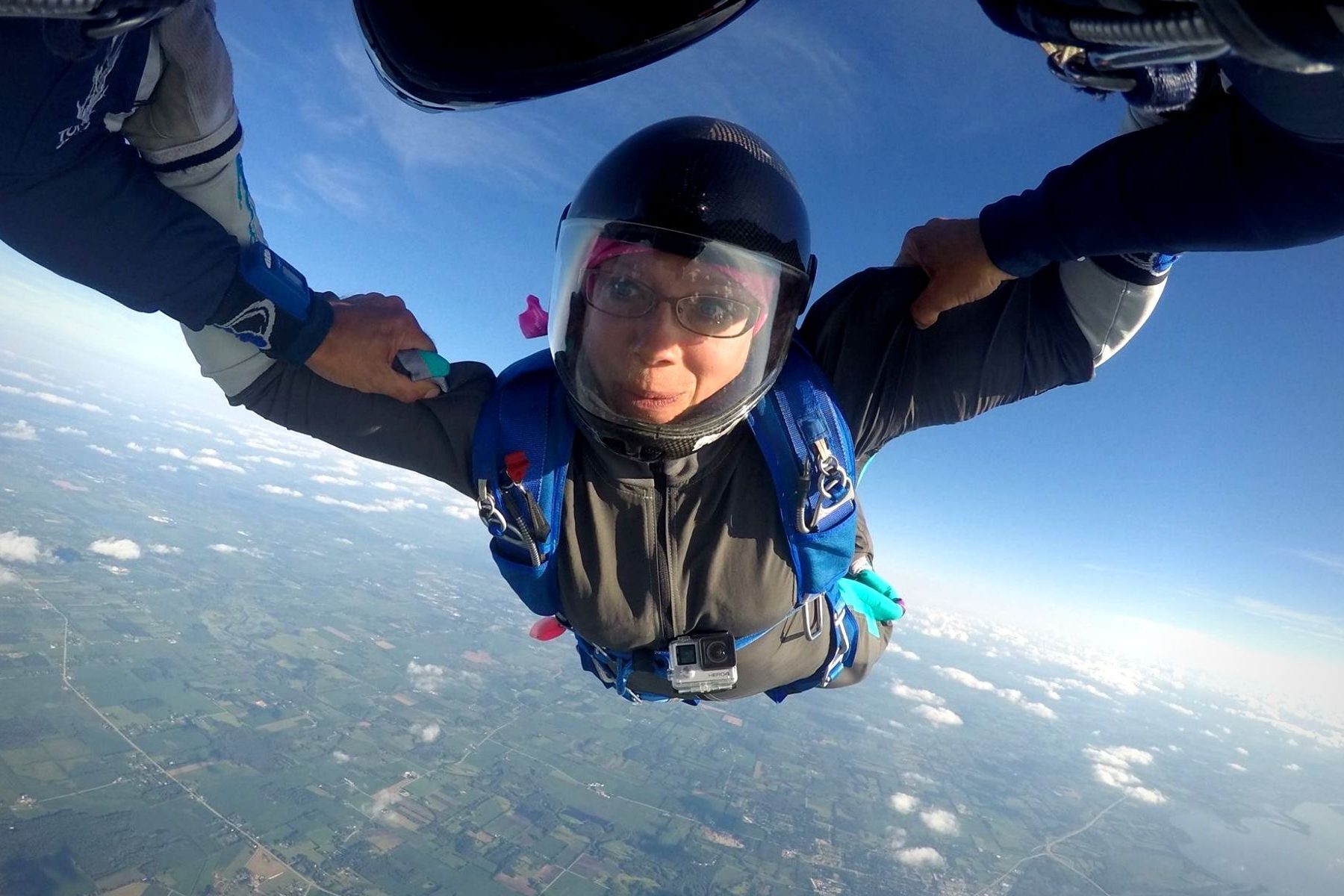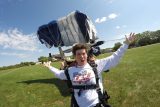How Long Does A Skydiving License Last?
Skydiving Training
Posted by: Wisconsin Skydiving Center 1 year ago
Whether you’re a seasoned jumper or have just discovered the freedom of flight, understanding the ins and outs of your skydiving license is crucial for confidently navigating your skydiving journey.
A skydiving license is like your golden ticket to adventure. Here’s the kicker: like all good things in life, skydiving licenses also have an expiration date. Don’t worry, it’s easy to keep it in check. Let’s dive into some skydiving license specifics, why it’s so important to keep it up to date, and how long each one actually lasts.

What Are The Solo Skydiving Licenses?
Before we get into the details about keeping your license current, let’s take a quick look at the solo skydiving license levels issued by the United States Parachute Association (USPA). You can earn four USPA skydiving licenses: A, B, C, and D. These are in order from first to last earned and correspond directly with skill level, experience, and privileges. Here’s a quick breakdown:
A-license requirements: 25 jumps!
- Complete USPA A-license proficiency card (includes packing a main parachute)
- Complete 5 group skydives with 2 people or more
- Pass the USPA A-license written and oral exams
A-license holders can jump with their friends! They’re seen as heads-up jumpers who prioritize safety of themselves and others.
B-license requirements: 50 jumps!
- Meet all the A-license requirements
- 30 minutes of freefall
- Land within 33 feet of target center on at least 10 jumps
- Pass the USPA B-license examination
Those who have B-licenses can jump from helicopters and hot air balloons! They can also partake in night jumps, with some extra training, of course.
C-license requirements: 200 jumps (All about accuracy!)
- Land within seven feet of a pre-selected target, 25 times
- 60 minutes of freefall
- Complete 50 formation jumps – 10 of them with at least 4 jumpers
- Pass the USPA C-license examination
C-licensees can wear cameras and start wingsuiting (if they wish). While neither feat actually requires a C-license, but rather 200 jumps, achieving the license lets others see a commitment to progression in the sport.
D-license requirements: 500 jumps!
- C-license (or have what a C-license entails)
- 3 hours of freefall
- At least 2 of the following:
- 100 formation skydives: 25 of them with 8 or more jumpers
- A night jump
- A canopy stack of 3 or more canopies
- Landing within 7 feet of a preselected target, 100 times (!!!)
- An intentional water landing
Having a D-license allows jumpers to pursue their tandem instructor ratings! D-license holders can also achieve a PRO-rating, which is done by consistently proving accuracy while landing and allows one to jump into events, like ball games.

How Long Does Your Skydiving License Last?
Do skydiving licenses expire? Yes, indeed! Why? The skydiving community places safety at the forefront of everything, so it would be hypocritical of us to not put expiration dates on your license to fly! However, once you actually earn your license, you never (or rarely) have to start all the way from step one. After a certain number of days since your last skydive, you’re required to take a refresher course and complete a skydive with a USPA-rated coach for your license to be valid again. This is called recurrency training.
How long does a skydiving license last before you need to get current? Here’s the timeline recommendation for each license:
- A-license: 60+ days since last jump
- B-license: 90+ days since last jump
- C-license: 180+ days since last jump
- D-license: 180+ days since last jump
What about before earning your license, while you’re still a student? Students have a tighter recurrency timeline.
- Student status (not cleared for self-supervision): 30+ days
- Student status (cleared for self-supervision): 30-60+ days
How do students who have yet to earn their license get current? Those who have not been cleared for self-supervision have to repeat their most recent AFF jump with an AFF Instructor (AFF-I). Students who have been cleared for self-supervision must complete refresher training and a jump with an AFF-I or Coach; the prestige of the instructor rating is dependent upon which part of the A-license progression they’re on.
What If You Haven’t Jumped In YEARS?
Licensed skydivers take years-long lay-offs for multiple reasons. Can you take 10+ years off from jumping and walk on the dropzone to do a single recurrency jump? Hmmm, probably not. Give us a ring if you’re in a similar situation, as we judge what exactly is needed to get you current on a case-by-case basis.
Wait … Does USPA membership expire? Yep, it sure does! It’s important to renew your membership every year, and if you’ve taken multiple consecutive years off from the sport, you’ll need to get this in check prior to skydiving.

Why Do You Need To Stay Current?
Safety! If you see the currency requirements as burdensome, then skydiving probably isn’t the sport for you. Staying active in the sport makes you a sponge of knowledge, gives you confidence, and ultimately makes you a safer skydiver.
Simply put: it is a privilege every single time we take to the skies. Keeping a license up-to-date with diligence and enthusiasm is a necessity for you and those around you! Ready to earn your skydiving license? We can’t wait to have you! Blue skies.
Categories:
You May Be Interested In:

Skydiving License 101: Understanding Different Types and Their Requirements
1 year ago by Wisconsin Skydiving Center

First Skydive – Tandem Skydive or Solo Skydive?
1 year ago by Wisconsin Skydiving Center

All About AFF Skydiving Training and How We Do It Better
2 years ago by Wisconsin Skydiving Center

How Much Experience Do Skydiving Instructors Have?
2 years ago by Wisconsin Skydiving Center